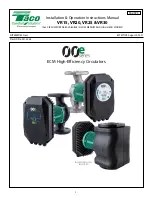
3.2
Checking the rudder alignment (Align Rudder)
This procedure establishes port and starboard rudder limits for
systems using a rudder reference transducer.
The rudder check forms part of the dockside calibration process.
The following procedure only applies
to vessels with a rudder reference
transducer.
1. Center the rudder and select
OK
.
2. When prompted, turn the rudder hard to port and select
OK
.
3. When prompted, turn the rudder hard to starboard and select
OK
.
4. When prompted, turn the rudder back to the center and select
OK
.
Note:
You can cancel Dockside calibration at any time by
selecting
STANDBY
.
3.3
Rudder Limit setting
As part of the Dockside calibration process, the system will set-up
the rudder limits.
•
For vessels with a rudder reference transducer
— This
procedure establishes the rudder limit. The rudder limit will be
displayed with a message confirming that the rudder limit has
been updated. This value can be changed if required.
•
For vessels without a rudder reference transducer
— a
default of 30 degrees is displayed, and can be changed as
required.
3.4
Hard over time
The hard over time setting can be specified as part of the
Dockside wizard.
The following information only
applies to vessels without a rudder
reference transducer.
•
If you already know the hard-over time
for your vessel’s
steering system: enter this time during the Dockside wizard
procedure.
•
If you do NOT know the hard-over time
for your vessel’s
steering system: skip this step during the Dockside wizard
procedure by selecting
SAVE
, then proceed to
Checking the
rudder drive
section in this document to complete the Dockside
wizard procedure. Once the wizard is complete, proceed to
Adjusting the hard-over time
in this document for information
on how to calculate and adjust the hard-over time.
3.5
Checking the rudder drive
As part of the dockside calibration process, the system will
check the drive connection. Once it has completed the check
successfully, a message will appear asking if it is safe for the
system to take the helm.
During this procedure the autopilot will move the rudder. Ensure
it is safe to proceed before pressing OK.
When in dockside calibration mode, with the Motor Check page
displayed:
1. Centre and let go of the rudder.
2. Disengage any rudder drive clutch.
3. Select
CONTINUE
.
4. Check it is safe to proceed before selecting
OK
.
For vessels
with
a rudder reference transducer, the autopilot
will now automatically move the rudder to port and then
starboard.
5. For vessels
without
a rudder reference transducer, you will
be asked to confirm that the rudder has turned to port by
selecting
YES
or
NO
.
6. Select
OK
if it is safe to engage the rudder in the opposite
direction.
7. You will be asked to confirm the rudder turned to starboard by
selecting
YES
or
NO
.
8. Dockside calibration is now complete, select
CONTINUE
.
Note:
If you confirmed a “NO” response for the rudder
movement to both port and starboard, the wizard will exit. It is
possible that the steering system did not move the rudder in any
direction, and it will be necessary to check the steering system
before completing the Dockside wizard procedure again.
You can cancel Dockside calibration at any time by pressing
STANDBY
.
4
Warning: Rudder check
If no rudder reference has been fitted you MUST
ensure that adequate provision is made to prevent
the steering mechanism from impacting the end
stops.
Adjusting the hard-over time
On vessels without a rudder reference transducer, it is important
to set a Hard Over Time.
Before attempting to follow this procedure ensure you have read
and understood the Rudder Check warning provided in this
document.
To estimate your hard over time follow the steps below:
1. With the autopilot in
Standby
, manually turn the rudder /
engine full to port. (For vessels with power steering the engine
should be running when turning the rudder.)
2. Engage
Auto
mode.
3. Press the
+10
and
+1
buttons at the same time (p70) or use
the
Rotary
(p70R) to alter your locked heading by 90 degrees.
Use a stop watch to time the movement of the rudder / engine.
4. Estimate how long it would take to move the rudder from full
port to full starboard. This estimate is your
Hard Over Time
.
Evolution autopilot set-up and commissioning with p70 / p70R
3






















